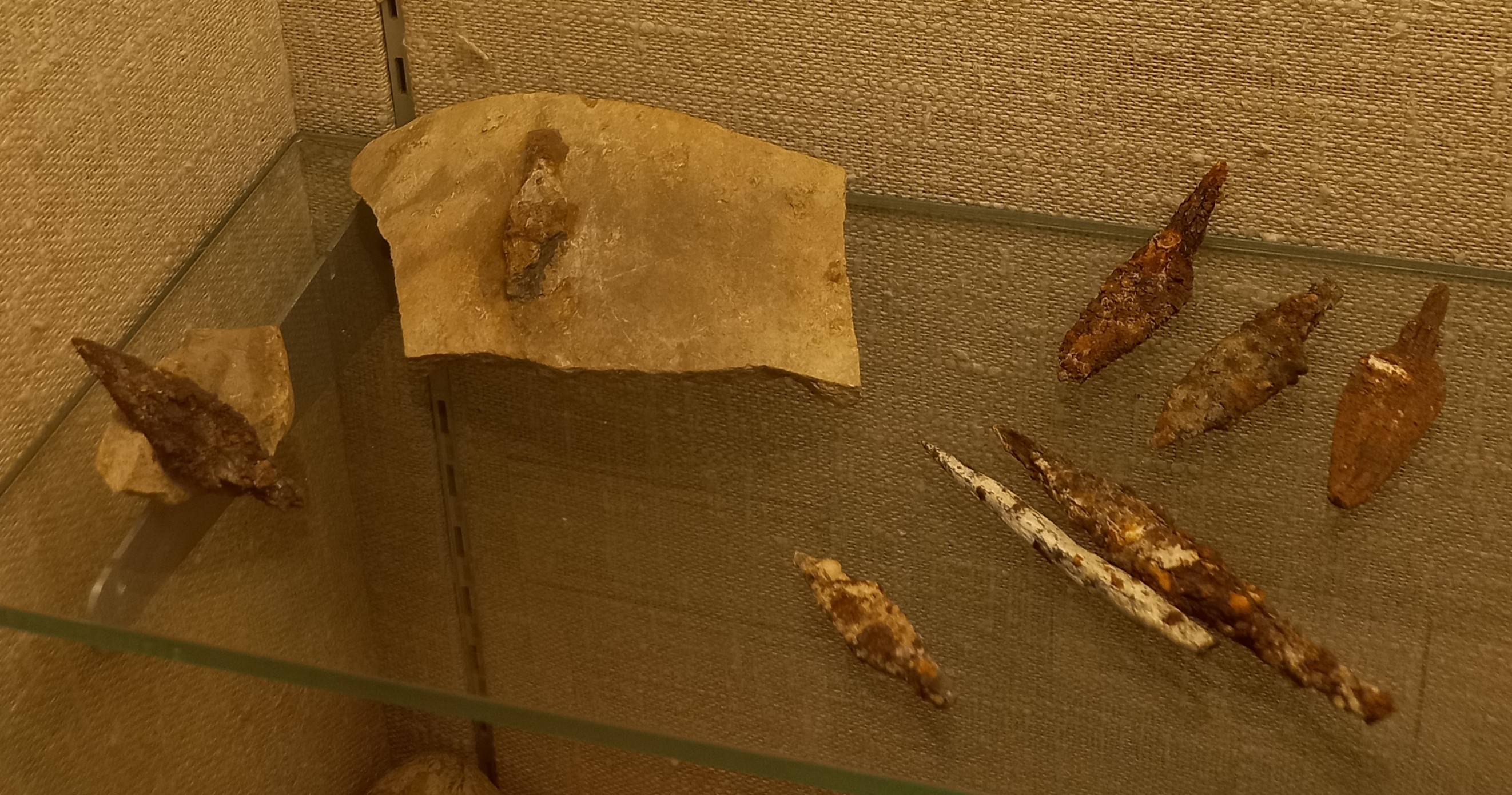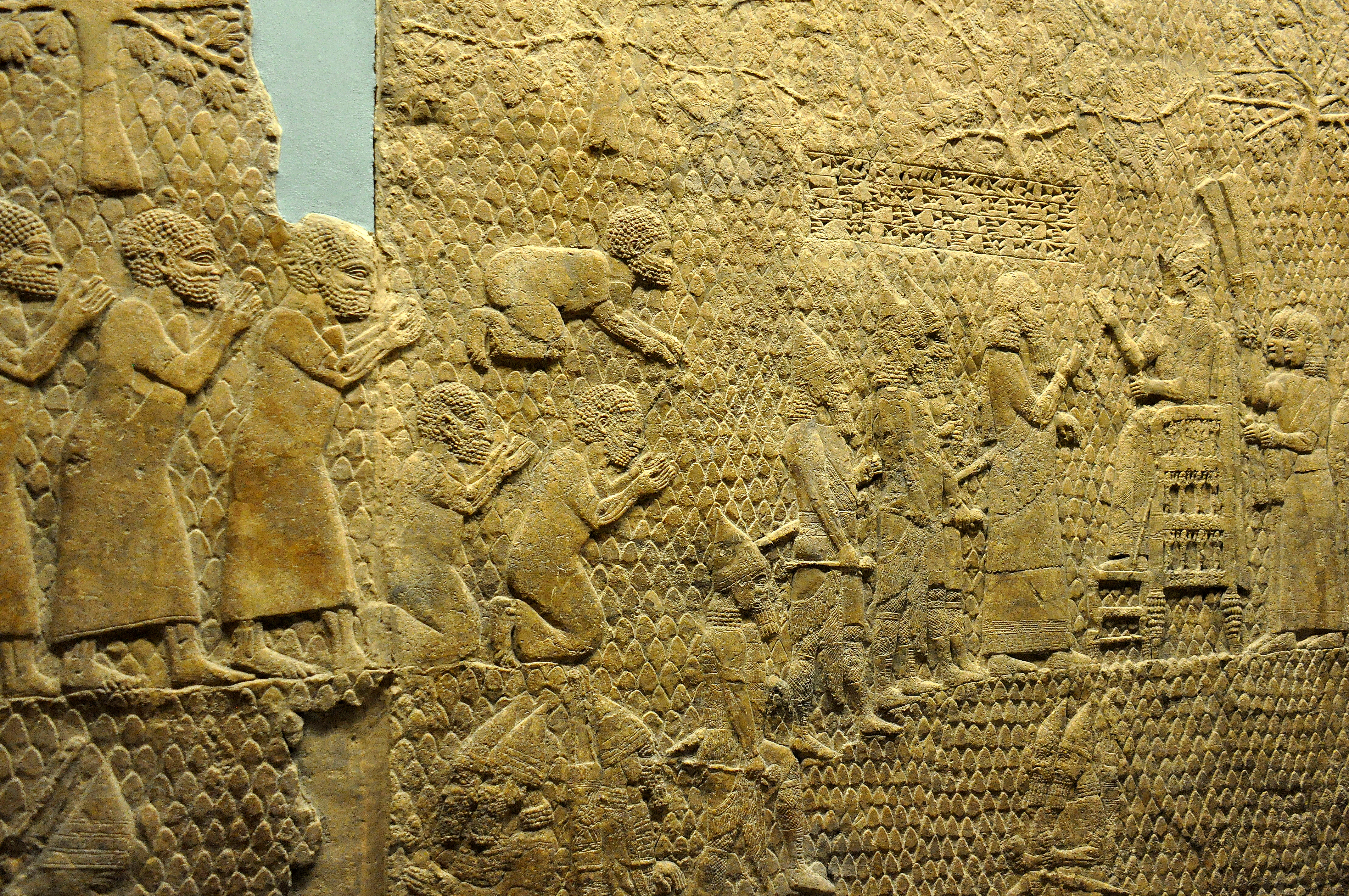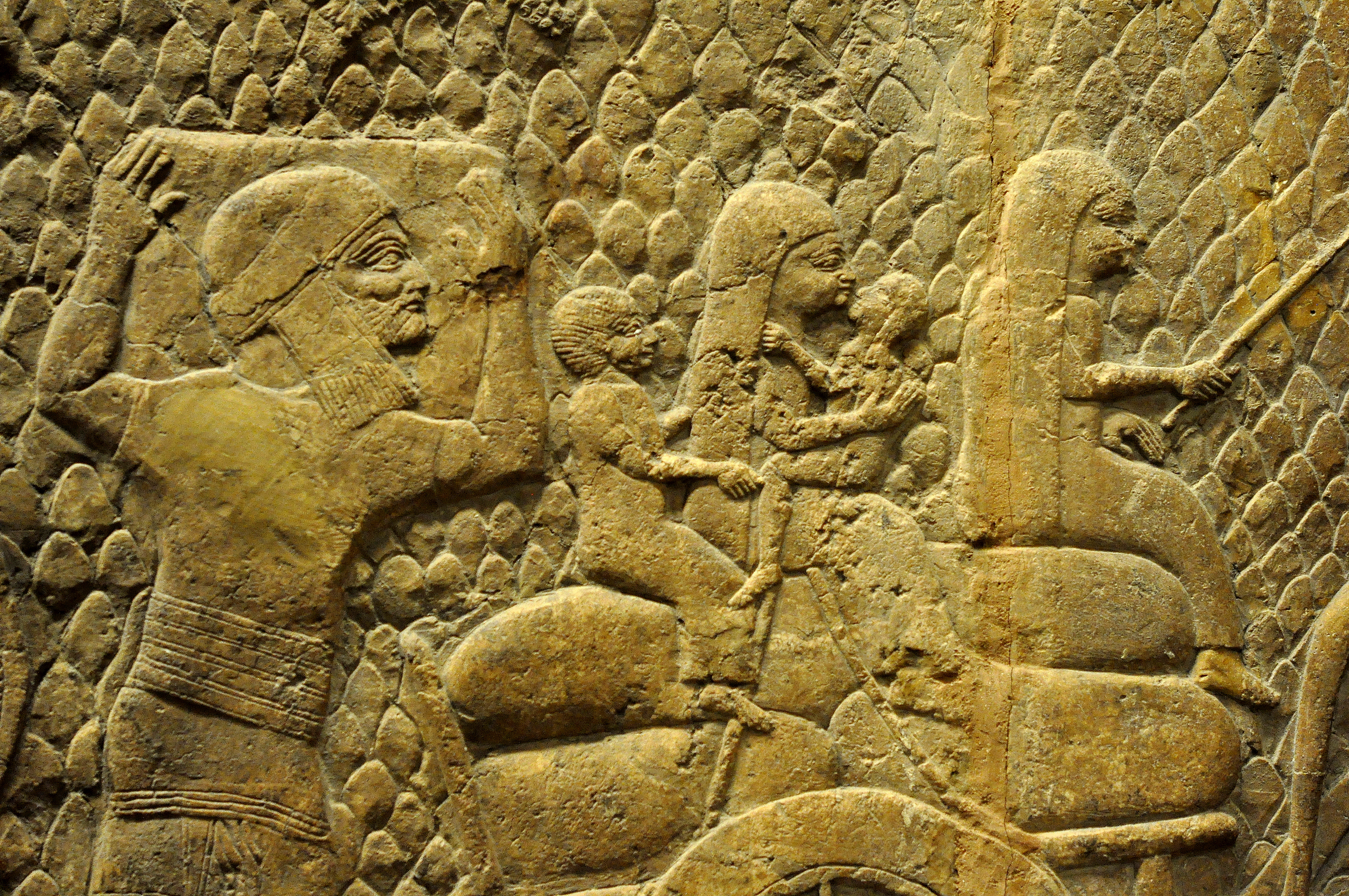Siege of Lachish on:
[Wikipedia]
[Google]
[Amazon]
The siege of Lachish was the

 Due to the steepness of the northern side of Lachish the Assyrian Army attacked from the south, where the Jewish defenders situated themselves on the walls.
The Jewish defenders threw stones and shot arrows at the advancing Assyrians; the Assyrians started shooting arrows and stones themselves, creating a skirmish between the two armies. Meanwhile, Assyrian military engineers built a ramp to the east of the main gate where Assyrian and Jewish troops began engaging in close combat. The Assyrians meanwhile brought
Due to the steepness of the northern side of Lachish the Assyrian Army attacked from the south, where the Jewish defenders situated themselves on the walls.
The Jewish defenders threw stones and shot arrows at the advancing Assyrians; the Assyrians started shooting arrows and stones themselves, creating a skirmish between the two armies. Meanwhile, Assyrian military engineers built a ramp to the east of the main gate where Assyrian and Jewish troops began engaging in close combat. The Assyrians meanwhile brought

 The city was captured by the Assyrians, its inhabitants led into captivity and the leaders of Lachish tortured to death. The town was abandoned, but resettled after the return from
The city was captured by the Assyrians, its inhabitants led into captivity and the leaders of Lachish tortured to death. The town was abandoned, but resettled after the return from  The captions for the relief at the British Museum say:
After the capture of Lachish, Assyrian soldiers carry off
The captions for the relief at the British Museum say:
After the capture of Lachish, Assyrian soldiers carry off
 Further sources for the conflict in general:
* Book of Kings
*
Further sources for the conflict in general:
* Book of Kings
*
Images of the Assyrian Reliefs of Lachish
{{coord missing, Israel 700s BC 8th century BC in the Kingdom of Judah
Neo-Assyrian Empire
The Neo-Assyrian Empire was the fourth and penultimate stage of ancient Assyrian history and the final and greatest phase of Assyria as an independent state. Beginning with the accession of Adad-nirari II in 911 BC, the Neo-Assyrian Empire grew ...
's siege and conquest of the town of Lachish
Lachish ( he, לכיש; grc, Λαχίς; la, Lachis) was an ancient Canaanite and Israelite city in the Shephelah ("lowlands of Judea") region of Israel, on the South bank of the Lakhish River, mentioned several times in the Hebrew Bible. Th ...
in 701 BCE. The siege is documented in several sources including the Hebrew Bible
The Hebrew Bible or Tanakh (;"Tanach"
'' Lachish relief The Lachish reliefs are a set of Assyrian palace reliefs narrating the story of the Assyrian victory over the kingdom of Judah during the siege of Lachish in 701 BCE. Carved between 700 and 681 BCE, as a decoration of the South-West Palace of Se ...
, a well-preserved series of reliefs which once decorated the Assyrian king '' Lachish relief The Lachish reliefs are a set of Assyrian palace reliefs narrating the story of the Assyrian victory over the kingdom of Judah during the siege of Lachish in 701 BCE. Carved between 700 and 681 BCE, as a decoration of the South-West Palace of Se ...
Sennacherib
Sennacherib ( Neo-Assyrian cuneiform: or , meaning " Sîn has replaced the brothers") was the king of the Neo-Assyrian Empire from the death of his father Sargon II in 705BC to his own death in 681BC. The second king of the Sargonid dynas ...
's palace at Nineveh
Nineveh (; akk, ; Biblical Hebrew: '; ar, نَيْنَوَىٰ '; syr, ܢܝܼܢܘܹܐ, Nīnwē) was an ancient Assyrian city of Upper Mesopotamia, located in the modern-day city of Mosul in northern Iraq. It is located on the eastern ba ...
.
Background
Several kingdoms in theLevant
The Levant () is an approximate historical geographical term referring to a large area in the Eastern Mediterranean region of Western Asia. In its narrowest sense, which is in use today in archaeology and other cultural contexts, it is ...
ceased to pay taxes to the Assyrian
Assyrian may refer to:
* Assyrian people, the indigenous ethnic group of Mesopotamia.
* Assyria, a major Mesopotamian kingdom and empire.
** Early Assyrian Period
** Old Assyrian Period
** Middle Assyrian Empire
** Neo-Assyrian Empire
* Assyri ...
king Senncharib. In retribution, he initiated a campaign to re-subjugate the rebelling kingdoms, among them the Kingdom of Judah
The Kingdom of Judah ( he, , ''Yəhūdā''; akk, 𒅀𒌑𒁕𒀀𒀀 ''Ya'údâ'' 'ia-ú-da-a-a'' arc, 𐤁𐤉𐤕𐤃𐤅𐤃 ''Bēyt Dāwīḏ'', " House of David") was an Israelite kingdom of the Southern Levant during the Iron Age. C ...
. After defeating the rebels of Ekron
Ekron (Philistine: 𐤏𐤒𐤓𐤍 ''*ʿAqārān'', he, עֶקְרוֹן, translit=ʿEqrōn, ar, عقرون), in the Hellenistic period known as Accaron ( grc-gre, Ακκαρων, Akkarōn}) was a Philistine city, one of the five cities o ...
in Philistia, Sennacharib set out to conquer Judah and, on his way to Jerusalem
Jerusalem (; he, יְרוּשָׁלַיִם ; ar, القُدس ) (combining the Biblical and common usage Arabic names); grc, Ἱερουσαλήμ/Ἰεροσόλυμα, Hierousalḗm/Hierosóluma; hy, Երուսաղեմ, Erusałēm. i ...
, came across Lachish: the second most important of the Jewish cities.
Battlefield
The battlefield was the walled city of Lachish, situated on a hill. The northern part of the hill is steeper than the southern side and due to that the gate is situated there. On top of the fact that the hill as of itself is quite high, the wall further makes the city hard to breach. Inside the city itself there was a castle with significant walls.Forces of each side

Assyrian army
The Assyrian Army was the most effective force of its time and was divided mostly into three different categories: *Infantry, which included both close-combat troops using spears, and archers. There were also hired mercenaries throwing stones ( slingers). The infantry was highly trained and worked alongside military engineers in order to breach sieges. *Cavalry; Assyrian cavalry were among the finest in the ancient Middle East and included both close-combat cavalry units with spears and mounted archers, which could both use the agility of the horses alongside long-range attacks. *Chariots, which were not used as much in sieges as in regular land engagements.Judean army
The Judean military force was insignificant compared to the professional and massive Assyrian army and mostly included local militias and mercenaries. There were barely any cavalrymen and chariots in the Judean army which mostly included infantry, either for close combat (spear
A spear is a pole weapon consisting of a shaft, usually of wood, with a pointed head. The head may be simply the sharpened end of the shaft itself, as is the case with fire hardened spears, or it may be made of a more durable material fastene ...
men) or long range combat (archer
Archery is the sport, practice, or skill of using a bow to shoot arrows.Paterson ''Encyclopaedia of Archery'' p. 17 The word comes from the Latin ''arcus'', meaning bow. Historically, archery has been used for hunting and combat. In m ...
s), they were also significantly less organized.
Siege
 Due to the steepness of the northern side of Lachish the Assyrian Army attacked from the south, where the Jewish defenders situated themselves on the walls.
The Jewish defenders threw stones and shot arrows at the advancing Assyrians; the Assyrians started shooting arrows and stones themselves, creating a skirmish between the two armies. Meanwhile, Assyrian military engineers built a ramp to the east of the main gate where Assyrian and Jewish troops began engaging in close combat. The Assyrians meanwhile brought
Due to the steepness of the northern side of Lachish the Assyrian Army attacked from the south, where the Jewish defenders situated themselves on the walls.
The Jewish defenders threw stones and shot arrows at the advancing Assyrians; the Assyrians started shooting arrows and stones themselves, creating a skirmish between the two armies. Meanwhile, Assyrian military engineers built a ramp to the east of the main gate where Assyrian and Jewish troops began engaging in close combat. The Assyrians meanwhile brought siege engine
A siege engine is a device that is designed to break or circumvent heavy castle doors, thick city walls and other fortifications in siege warfare. Some are immobile, constructed in place to attack enemy fortifications from a distance, while oth ...
s to the ramp and broke the wall; the Jewish defenders could not hold the Assyrian army and retreated, with some attempting to escape from the other side of the hill.
Subjugation
 The city was captured by the Assyrians, its inhabitants led into captivity and the leaders of Lachish tortured to death. The town was abandoned, but resettled after the return from
The city was captured by the Assyrians, its inhabitants led into captivity and the leaders of Lachish tortured to death. The town was abandoned, but resettled after the return from Babylonia
Babylonia (; Akkadian: , ''māt Akkadī'') was an ancient Akkadian-speaking state and cultural area based in the city of Babylon in central-southern Mesopotamia (present-day Iraq and parts of Syria). It emerged as an Amorite-ruled state c ...
.
Assyrian reliefs portraying the siege of Lachish
Lachish ( he, לכיש; grc, Λαχίς; la, Lachis) was an ancient Canaanite and Israelite city in the Shephelah ("lowlands of Judea") region of Israel, on the South bank of the Lakhish River, mentioned several times in the Hebrew Bible. Th ...
clearly show battering rams attacking the vulnerable parts of the city.Eerdmans Dictionary of the Bible – Page 157, by David Noel Freedman
The British Museum has a superb set of relief carvings which depicted the siege in some detail. It shows the Assyrian soldiers firing arrows, and slingstones, and approaching the walls of Lachish using mudbrick ramps. The attackers shelter behind wicker shields, and deploy battering rams. The walls and towers of Lachish are shown crowded with defenders shooting arrows, throwing rocks and torches on the heads of the attackers.
 The captions for the relief at the British Museum say:
After the capture of Lachish, Assyrian soldiers carry off
The captions for the relief at the British Museum say:
After the capture of Lachish, Assyrian soldiers carry off plunder
Looting is the act of stealing, or the taking of goods by force, typically in the midst of a military, political, or other social crisis, such as war, natural disasters (where law and civil enforcement are temporarily ineffective), or rioting. ...
from the governor's palace: a bundle of scimitar
A scimitar ( or ) is a single-edged sword with a convex curved blade associated with Middle Eastern, South Asian, or North African cultures. A European term, ''scimitar'' does not refer to one specific sword type, but an assortment of different ...
s, round shields, a chariot, a throne, and a pair of incense-burners. Below, Judean prisoners move in families, taking their goods and animals with them into exile."
Panels 9–10
The procession of prisoners from Lachish continues, moving through a rocky landscape with vines, fig trees, and perhaps olives in the background. Officials regarded as responsible for the rebellion against Assyria are treated more severely: two of them are being flayed alive.
Panels 11–13
Sennacherib, on a magnificent throne, watches as prisoners are brought before him and sometimes executed. There is a tent behind him, his chariot is in the foreground, and his bodyguard are stationed around. The King's face has been deliberately slashed, perhaps by an enemy soldier at the fall of Nineveh in 612 BC.
Panels 14–16
This panel, which closes the Lachish series, shows the base camp from which the siege was conducted. It is fortified, with a road through the middle. Servants are at work in tents, and two priests are performing a ceremony in front of the chariots on which are mounted the standards of the gods.
The reliefs continues showing the looting of the city, and defenders are shown being thrown over the ramparts, impaled, having their throats cut and asking for mercy. A bird's eye plan of the city is shown with house interiors shown in section.
Aftermath
After he captured the second most important city in Judah, Sennacherib encamped there and then sent hisrabshakeh Rabshakeh (Akkadian: 𒃲𒁉𒈜𒈨𒌍 ''rab šāqê'' AL.BI.LUL.MEŠ ; grc, Ραψακης ''Rapsakēs''; la, Rabsaces; aii, ܪܲܒ݂ܫܵܩܹ̈ܐ; alternative spellings include Rab-shakeh, Rabsaces, or Rab shaqe) is a title meaning "chief of ...
to capture Jerusalem
Jerusalem (; he, יְרוּשָׁלַיִם ; ar, القُدس ) (combining the Biblical and common usage Arabic names); grc, Ἱερουσαλήμ/Ἰεροσόλυμα, Hierousalḗm/Hierosóluma; hy, Երուսաղեմ, Erusałēm. i ...
.
Cultural references
The Siege of Lachish is the subject of an eponymous song (and single) bymetal
A metal (from ancient Greek, Greek μέταλλον ''métallon'', "mine, quarry, metal") is a material that, when freshly prepared, polished, or fractured, shows a lustrous appearance, and conducts electrical resistivity and conductivity, e ...
band Melechesh
Melechesh is an ethnically Assyrian black metal band that originated in Jerusalem and is currently based in Amsterdam, Netherlands. Ashmedi started the band as a solo project in 1993. In the following year, guitarist Moloch and drummer Lord Cu ...
.
Ancient sources
*Lachish relief
The Lachish reliefs are a set of Assyrian palace reliefs narrating the story of the Assyrian victory over the kingdom of Judah during the siege of Lachish in 701 BCE. Carved between 700 and 681 BCE, as a decoration of the South-West Palace of Se ...
- A relief that was featured in Sennacherib's palace in Nineveh
Nineveh (; akk, ; Biblical Hebrew: '; ar, نَيْنَوَىٰ '; syr, ܢܝܼܢܘܹܐ, Nīnwē) was an ancient Assyrian city of Upper Mesopotamia, located in the modern-day city of Mosul in northern Iraq. It is located on the eastern ba ...
, it was identified by the text in it: "Sennacherib King of the Universe, King of Assyria, sits on a throne and the spoils of Lachish are paraded before him."
 Further sources for the conflict in general:
* Book of Kings
*
Further sources for the conflict in general:
* Book of Kings
*Book of Isaiah
The Book of Isaiah ( he, ספר ישעיהו, ) is the first of the Latter Prophets in the Hebrew Bible and the first of the Major Prophets in the Christian Old Testament. It is identified by a superscription as the words of the 8th-century B ...
*Book of Chronicles
The Book of Chronicles ( he, דִּבְרֵי־הַיָּמִים ) is a book in the Hebrew Bible, found as two books (1–2 Chronicles) in the Christian Old Testament. Chronicles is the final book of the Hebrew Bible, concluding the third se ...
*Sennacherib's Prism
Sennacherib's Annals are the annals of the Assyrian king Sennacherib. They are found inscribed on a number of artifacts, and the final versions were found in three clay prisms inscribed with the same text: the Taylor Prism is in the British Museum ...
*Antiquities of the Jews
''Antiquities of the Jews'' ( la, Antiquitates Iudaicae; el, Ἰουδαϊκὴ ἀρχαιολογία, ''Ioudaikē archaiologia'') is a 20-volume historiographical work, written in Greek, by historian Flavius Josephus in the 13th year of the ...
, Titus Flavius Josephus
Flavius Josephus (; grc-gre, Ἰώσηπος, ; 37 – 100) was a first-century Romano-Jewish historian and military leader, best known for ''The Jewish War'', who was born in Jerusalem—then part of Roman Judea—to a father of priestly d ...
See also
*List of artifacts significant to the Bible
The following is a list of inscribed artifacts, items made or given shape by humans, that are significant to biblical archaeology.
Selected artifacts significant to biblical chronology
These table lists inscriptions which are of particular sign ...
* List of conflicts in the Near East
This is a list of conflicts in the Near East arranged; first, chronologically from the epipaleolithic until the end of the late modern period ( – c. AD 1945); second, geographically by sub-regions (starting from east to west; then, south to n ...
References
Further reading
*Edelman, Diana. 2000. "What If We Had No Accounts of Sennacherib's Third Campaign or the Palace Reliefs Depicting his Capture of Lachish?" ''Biblical Interpretation'' 8, nos. 1–2: 88–103. *Finkelstein, Israel, and Nadav Na'aman. 2011. ''The Fire Signals of Lachish: Studies In the Archaeology and History of Israel In the Late Bronze Age, Iron Age, and Persian Period In Honor of David Ussishkin.'' Winona Lake, IN: Eisenbrauns. *Ussishkin, David. 1982. ''The Conquest of Lachish by Sennacherib.'' Tel-Aviv: Tel Aviv University, Institute of Archaeology. *--. 2015. "Sennacherib's Campaign in Judah: The Conquest of Lachish." ''Journal for Semitics'' 24, no. 2: 719–58. *Ussishkin, David, and Miriam Feinberg Vamosh. 2015. ''Biblical Lachish: A Tale of Construction, Destruction, Excavation and Restoration.'' Jerusalem: Israel Exploration Society. *External links
Images of the Assyrian Reliefs of Lachish
{{coord missing, Israel 700s BC 8th century BC in the Kingdom of Judah
Lachish
Lachish ( he, לכיש; grc, Λαχίς; la, Lachis) was an ancient Canaanite and Israelite city in the Shephelah ("lowlands of Judea") region of Israel, on the South bank of the Lakhish River, mentioned several times in the Hebrew Bible. Th ...
Lachish
Lachish ( he, לכיש; grc, Λαχίς; la, Lachis) was an ancient Canaanite and Israelite city in the Shephelah ("lowlands of Judea") region of Israel, on the South bank of the Lakhish River, mentioned several times in the Hebrew Bible. Th ...
Lachish
Lachish ( he, לכיש; grc, Λαχίς; la, Lachis) was an ancient Canaanite and Israelite city in the Shephelah ("lowlands of Judea") region of Israel, on the South bank of the Lakhish River, mentioned several times in the Hebrew Bible. Th ...
Sennacherib
Lachish
Lachish ( he, לכיש; grc, Λαχίς; la, Lachis) was an ancient Canaanite and Israelite city in the Shephelah ("lowlands of Judea") region of Israel, on the South bank of the Lakhish River, mentioned several times in the Hebrew Bible. Th ...
Lachish
Lachish ( he, לכיש; grc, Λαχίς; la, Lachis) was an ancient Canaanite and Israelite city in the Shephelah ("lowlands of Judea") region of Israel, on the South bank of the Lakhish River, mentioned several times in the Hebrew Bible. Th ...